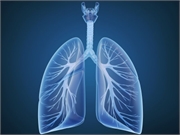Dyspnea score change positively linked to air trapping extent change, end-expiratory tracheal shape change
WEDNESDAY, Jan. 29, 2020 (HealthDay News) — Obese individuals undergoing bariatric surgery have improvement in dyspnea, which is associated with less air trapping and end-expiratory tracheal collapse, according to a study published online Jan. 28 in Radiology.
Susan J. Copley, M.B.B.S., M.D., from Hammersmith Hospital in London, and colleagues examined lung parenchymal and tracheal computed tomography (CT) morphology before and six months after bariatric surgery among 51 consecutive patients. Participants had undergone limited inspiratory and end-expiratory thoracic CT before and after surgery, as well as pulmonary function testing, body mass index calculation, and modified Medical Research Council (mMRC) dyspnea scale and Epworth scoring.
The researchers found that the extent of air trapping correlated most strongly with decreased total lung capacity before surgery. After surgery, decreases were seen in percentage mosaic attenuation (0 versus 0 percent), air trapping (9.6 versus 2.5 percent), and tracheal collapse (201 versus 229 mm²). After surgery, there was a positive correlation noted for mMRC dyspnea score change with air-trapping extent change (rs = 0.046) and end-expiratory tracheal shape change (rs = 0.40). Air trapping was the main determinant for decreased dyspnea after surgery in a multivariable analysis (odds ratio, 1.2).
“For the first time, this study has demonstrated changes in the CT morphology of large and small airways that improve when individuals lose weight,” Copley said in a statement. “These features correlate with an improvement in patient symptoms.”
One author disclosed financial ties to the publishing industry; a second author disclosed ties to pharmaceutical and medical manufacturing companies.
Copyright © 2020 HealthDay. All rights reserved.








